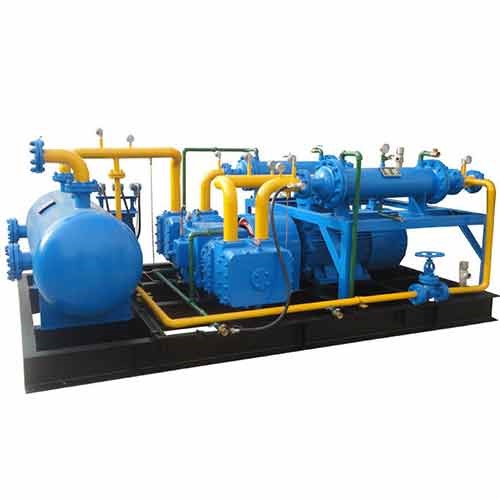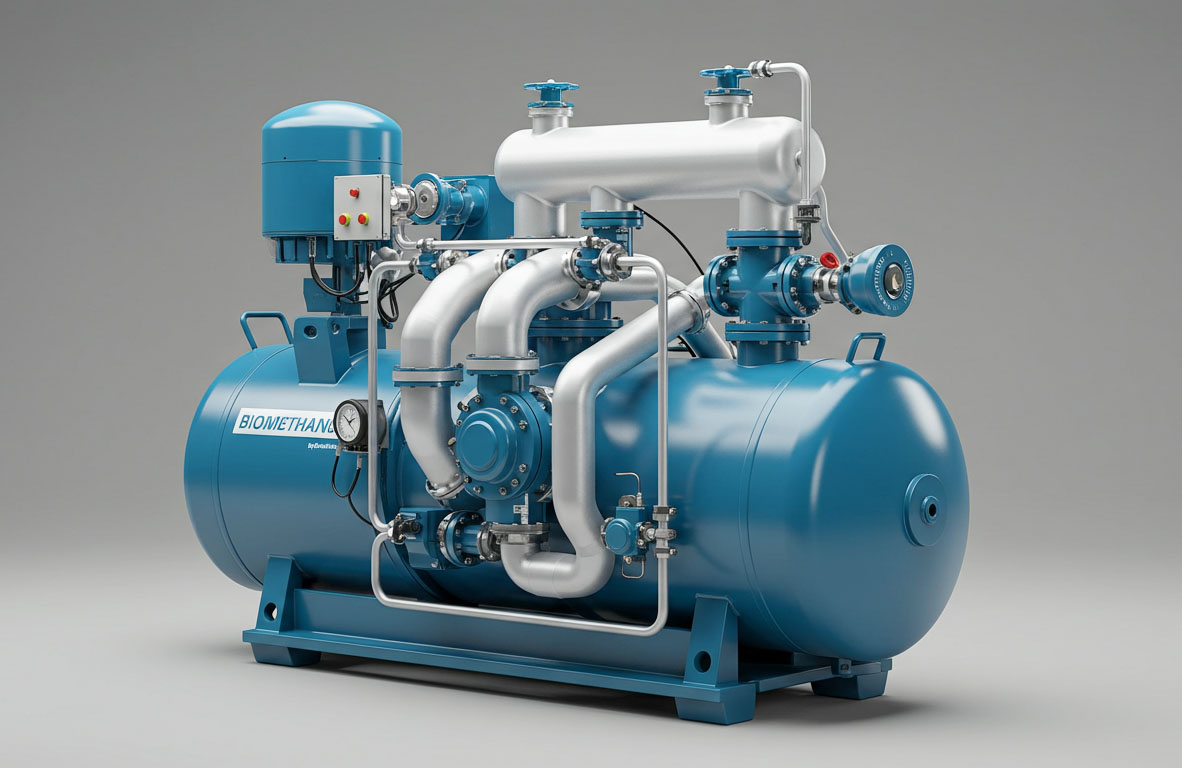Efficient Biomethane Compressor for Enhanced Biogas Energy
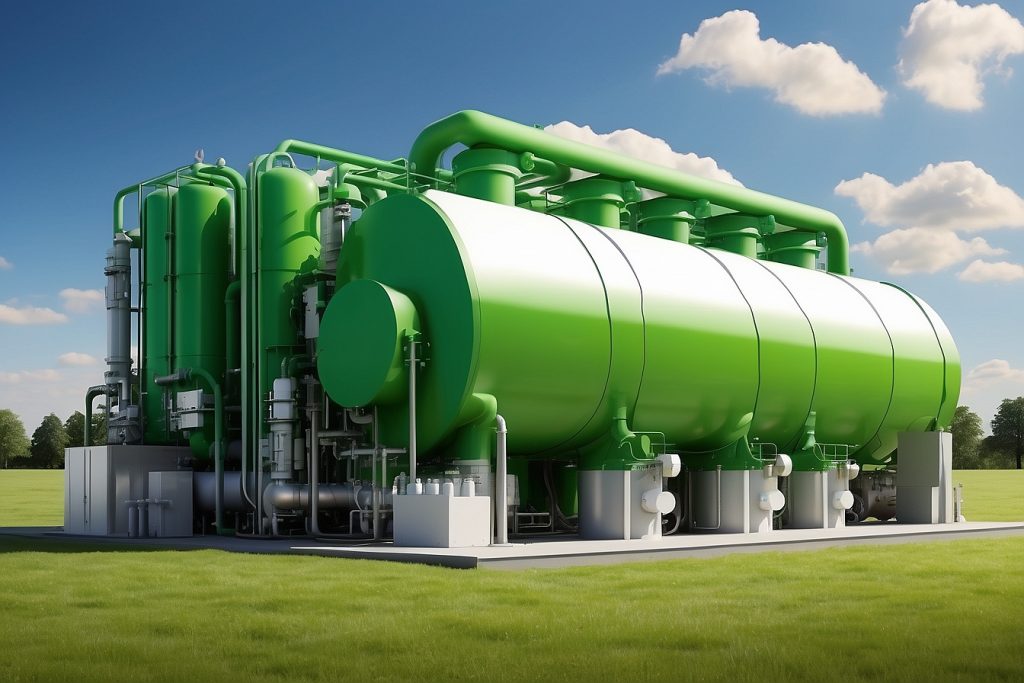
In the realm of renewable energy, the role of Biomethane Compressor in Biogas Production and Energy Generation stands paramount. This article delves into how these compressors, pivotal in biogas treatment and conversion, are driving the shift towards more sustainable energy sources. Highlighting their applications across diverse fields, including the food industry, it explores the impact of compressor technology in efficiently managing biogas applications. By transforming biogas into a viable alternative to natural gas, these compressors not only contribute to reducing carbon dioxide emissions but also underscore the potential of biogas and biomethane as key players in the future of environmentally friendly electric energy.
What is Biomethane and Biogas Production?
Biomethane Compressor and biogas production represent key elements in the sustainable energy landscape, offering a greener alternative to traditional fossil fuels. This process involves the transformation of organic waste into valuable energy sources, emphasizing the importance of renewable resources in today’s energy sector. By understanding the intricacies of biogas and biomethane, we can better appreciate their role in advancing environmental sustainability and energy independence.
Definition of Biogas and Biomethane
Biogas is a versatile energy source produced through the anaerobic digestion of organic materials, including agricultural waste, manure, and sewage. It primarily comprises methane and carbon dioxide, along with trace amounts of other gases. Biomethane, on the other hand, is a refined form of biogas, where impurities and carbon dioxide are removed to yield a purer methane product. This methane-rich biomethane closely resembles natural gas in its composition and energy potential, making it a valuable resource in renewable energy systems.
Process of Biogas Production
The production of biogas begins with the anaerobic digestion of organic matter. In the absence of oxygen, microorganisms break down this material, releasing a mixture of gases, primarily methane and carbon dioxide. This process typically occurs in a controlled environment like a biogas plant, where temperature, moisture, and pH levels are regulated to optimize gas production. The resulting biogas can be used as-is for heating and electricity generation, or it can undergo further processing to increase its methane content.
Upgrading Biogas to Biomethane
Upgrading biogas to biomethane involves several steps to remove impurities, such as water vapor, hydrogen sulfide, and carbon dioxide, from the biogas. Techniques like water scrubbing, pressure swing adsorption, and membrane separation are commonly used for this purpose. The upgraded biomethane has a higher methane concentration, making it suitable for injection into the natural gas grid or for use as vehicle fuel, thereby expanding its utility as a renewable energy source.
Applications of Biomethane
Biomethane’s versatility makes it suitable for various applications, including as a renewable fuel in the transportation sector, a source of heat and power in residential and industrial settings, and as a substitute for natural gas in the grid. Its use in the food industry, for instance, not only provides a sustainable energy source but also contributes to waste reduction. By converting organic waste into energy, biomethane helps in creating a circular economy, where waste products are reutilized efficiently.
Role of Compressors in Biogas Upgrading
Compressors play a crucial role in the biogas upgrading process. They are used to increase the pressure of the biogas, making it easier to remove impurities and facilitating its conversion to biomethane. The technology behind these compressors, often tailored to handle the specific composition of biogas, ensures efficient operation and high-quality biomethane output. Additionally, advancements in compressor technology have made the upgrading process more environmentally friendly and cost-effective, further promoting the adoption of biomethane as a sustainable energy solution.
Importance of Compressors in Biogas Upgrading
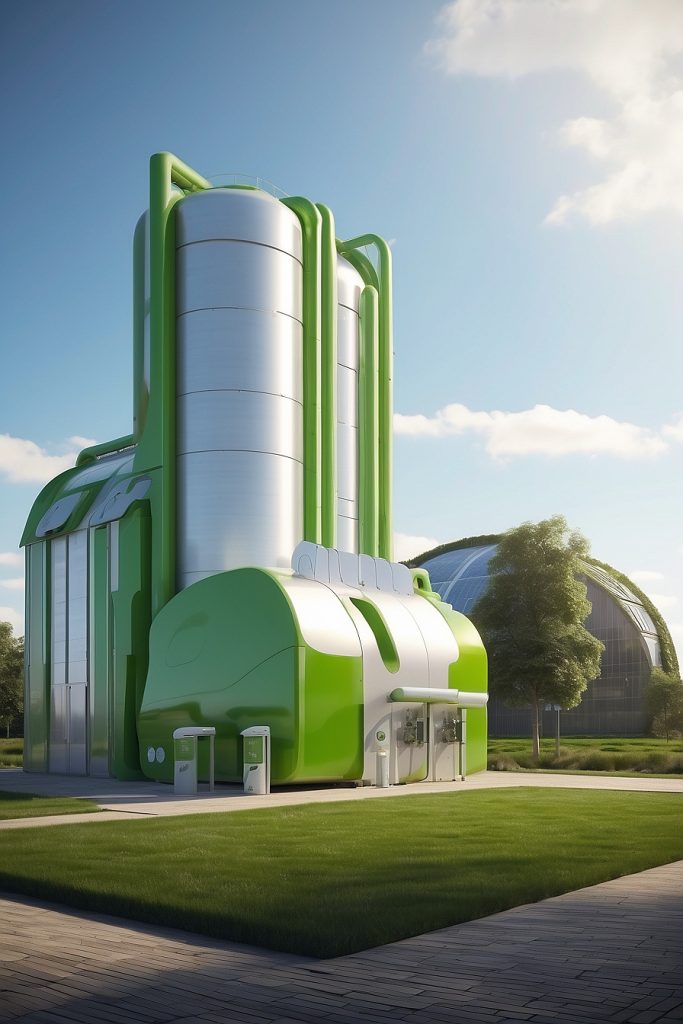
The critical role of compressors in the biogas upgrading process cannot be overstated. These advanced mechanical devices are integral in enhancing the efficiency and effectiveness of biogas production, playing a pivotal role in transforming biogas into a cleaner, more sustainable energy source. Understanding the multifaceted functions and benefits of compressors in this process is essential for anyone engaged in renewable energy production.
Role of Compressors in Methane and Biomethane Extraction
Compressors are essential in the extraction of methane and biomethane from biogas. They work by increasing the pressure of the gas, facilitating the removal of impurities and the concentration of methane. This process not only improves the quality of the biomethane produced but also enhances its suitability for various applications, such as fuel for vehicles or injection into the natural gas grid. The efficiency of compressors, therefore, directly impacts the effectiveness and environmental benefits of biomethane as a renewable energy source.
Biogas Compressors and Biomethane Production
In biomethane production, biogas compressors serve a dual purpose. Firstly, they compress the biogas to initiate the upgrading process, and secondly, they ensure the smooth transportation of the upgraded biomethane to storage facilities or distribution networks. The design and operation of these compressors are tailored to handle the unique characteristics of biogas, which can vary significantly based on the feedstock and production process. This adaptability is crucial for maximizing the yield and quality of biomethane.
Benefits of Oil-Free Compressors
Oil-free compressors offer several advantages in biogas upgrading, chiefly their ability to prevent oil contamination in the biogas stream. This is particularly important in maintaining the purity of biomethane and ensuring its suitability for sensitive applications, such as in the food industry. Moreover, oil-free compressors tend to have lower maintenance requirements and a longer lifespan, which translates into cost savings and reduced environmental impact over time.
Atex Standards for Biogas Compressors
Biogas compressors must comply with Atex standards, which are regulations designed to ensure safety in explosive atmospheres. Given the flammable nature of biogas, these standards are crucial for preventing accidents and ensuring the safe operation of biogas plants. Compliance with Atex standards not only safeguards the facility and its personnel but also instills confidence in the end-users of the biomethane produced.
Utilizing Biogas and Biomethane for Renewable Energy
The utilization of biogas and biomethane as sources of renewable energy is gaining traction worldwide. These gases can be used to generate electricity, heat, and fuel for transportation, contributing significantly to the reduction of greenhouse gas emissions. The role of compressors in this context is to ensure that the biogas is efficiently upgraded to biomethane, thereby maximizing its energy potential and making it a viable alternative to fossil fuels.
Challenges and Solutions in Biogas and Biomethane Compression
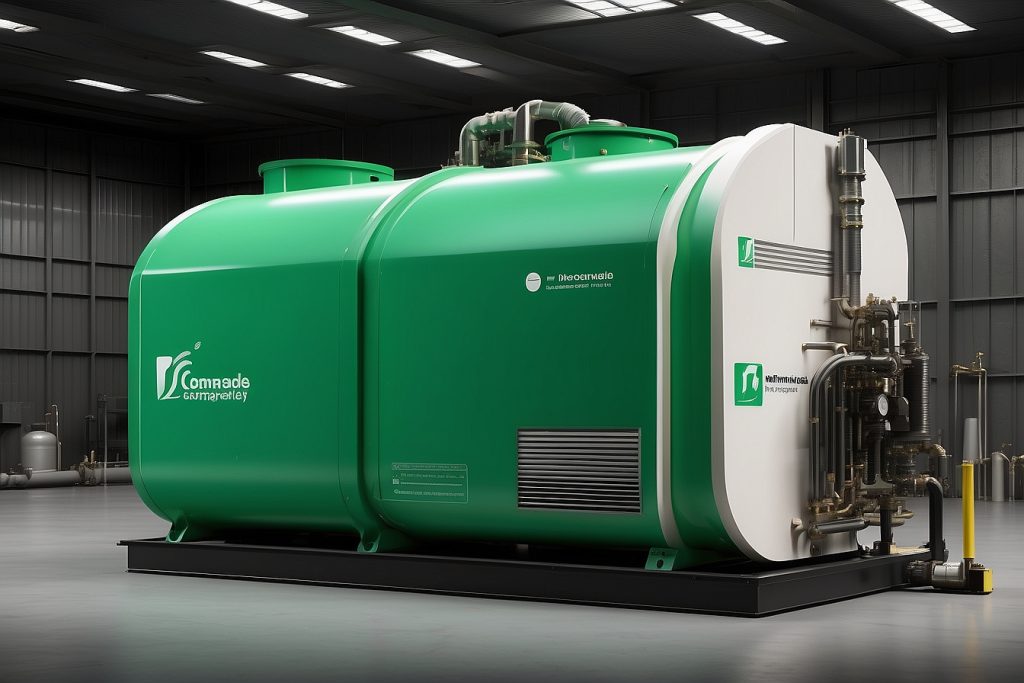
The journey of transforming biogas into a more valuable and versatile fuel like biomethane is marked by several challenges. Addressing these effectively is crucial for maximizing the potential of biogas as a sustainable energy source, especially in an era increasingly focused on renewable energy solutions.
Dealing with CO2 Compression in Biomethane Production
CO2 compression in biomethane production is a critical process, requiring precise handling to ensure efficiency and environmental compliance. Advanced compression technologies are employed to separate CO2 effectively, enhancing the methane concentration in biomethane. This step is vital for achieving high-quality fuel standards, especially important in sectors like transportation and energy generation where biomethane is rapidly gaining traction.
Handling H2S in Biogas Upgrading
Hydrogen sulfide (H2S) presents a significant challenge in biogas upgrading due to its corrosive and toxic nature. Effective removal of H2S is essential to protect compression equipment and to ensure the quality of the biomethane. Advanced filtration and scrubbing technologies are integrated into the compression systems, effectively removing H2S and other impurities, thus safeguarding the integrity of the biomethane produced.
Efficient Compression for Different Biogas Compositions
Biogas composition can vary widely based on the organic material used and the conditions of the anaerobic digestion process. Efficient compression systems must be adaptable to these varying compositions, ensuring consistent performance and optimal biomethane yield. This requires compressors with advanced control systems and adaptable mechanisms, a key area of focus in the development of cutting-edge biogas compression technology.
Ensuring Environmental Friendliness in Compression Process
The environmental impact of the compression process is a primary consideration. Compressors must not only be efficient but also environmentally friendly, minimizing emissions and energy consumption. This is achieved through innovative designs and technologies that optimize the compression process, aligning with global efforts to reduce carbon footprints and promote sustainable energy practices.
Meeting the Varied Applications of Biogas and Biomethane
Biomethane’s versatility as an energy source means it finds applications in diverse sectors, from powering vehicles to heating homes. Compressors play a crucial role in tailoring the quality and pressure of biomethane to meet these varied requirements. Modern compressors are designed to be flexible and efficient, catering to the specific needs of each application.
Considerations for Biomethane Compression and Energy Generation
As the renewable energy sector evolves, the focus on biomethane as a key component of this landscape intensifies. This necessitates a careful consideration of various factors to optimize biomethane production and usage.
Technological Advancements in Biogas and Biomethane Compression
The compression of biogas and biomethane is witnessing rapid technological advancements. These innovations aim at enhancing efficiency, reducing environmental impact, and increasing the adaptability of compressors to different biogas compositions. The focus is on developing systems that can handle higher pressures, more varied gas compositions, and that are more energy-efficient, aligning with the global push towards sustainable energy solutions.
Impact of Biogas Compressors on Grid Injection and Refueling Applications
Biogas compressors significantly influence the feasibility of injecting biomethane into the natural gas grid and its use in vehicle refueling stations. The quality of compression affects the purity and pressure of biomethane, critical factors for these applications. Compressors must meet high standards to ensure that biomethane is a compatible, safe, and efficient alternative to conventional natural gas.
Biogas-to-Biomethane Process with Multiple Compressors
In larger-scale biogas upgrading facilities, multiple compressors are often used in tandem to enhance efficiency and control. This setup allows for more precise management of the compression stages, ensuring optimal biomethane quality and yield. The integration of multiple compressors requires advanced control systems for smooth operation and maximum efficiency.
Efficiently Generating Biomethane and CO2 through Compression
Efficient compression is key to maximizing the yield of biomethane and the management of CO2. Advanced compressors play a pivotal role in this, ensuring that the transformation from biogas to biomethane is carried out as efficiently as possible, with minimal energy waste and maximum output.
Adhering to Regulations in Biogas and Biomethane Compression
Compliance with regulatory standards is crucial in the compression of biogas and biomethane. This includes adherence to environmental, safety, and quality regulations. Compressors must be designed and operated in accordance with these standards, ensuring safe and environmentally responsible biomethane production.
Applications of Sauer Biomethane Compressor in Biogas and Biomethane Projects
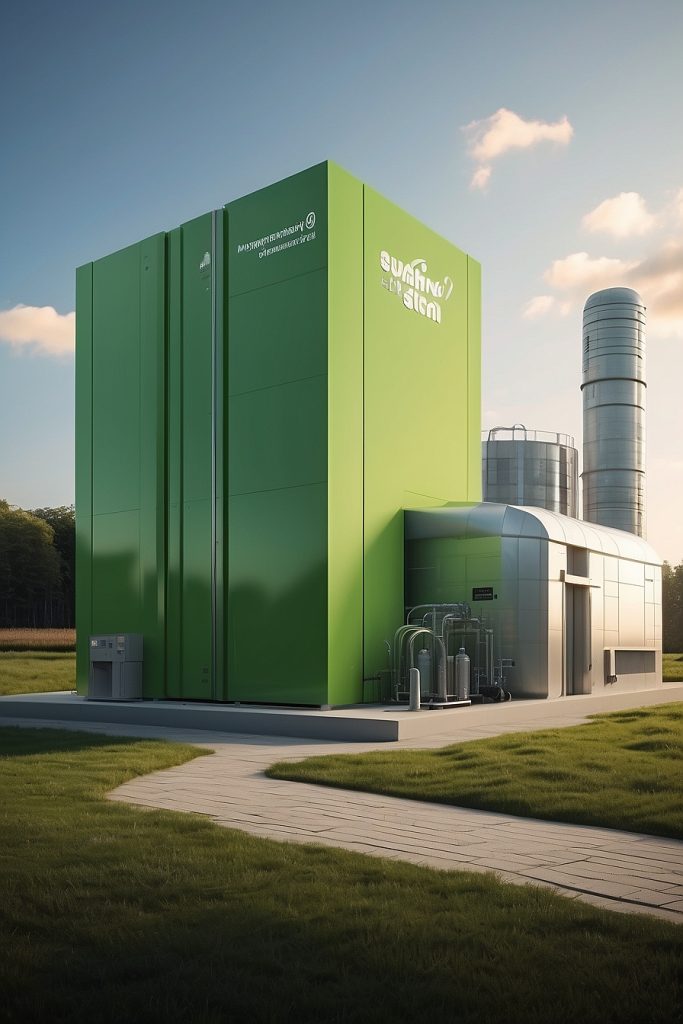
Sauer Biomethane Compressor have emerged as key components in the efficient and sustainable management of biogas and biomethane projects. Their robust design, adaptability, and efficiency make them ideal for a variety of applications, significantly enhancing the process of biogas production and upgrading. The diverse range of applications these compressors cater to demonstrates their versatility and the vital role they play in the renewable energy sector.
Utilizing Sauer Compressors for Anaerobic Digestion and Sewage Treatment
In the realm of anaerobic digestion and sewage treatment, Sauer compressors are instrumental. They facilitate the efficient processing of sewage and organic waste, converting them into biogas. This biogas, primarily composed of methane and carbon dioxide, can then be used for various energy production applications. The reliability and efficiency of Sauer compressors ensure that the anaerobic digestion process is maximized, leading to higher biogas yields and more efficient sewage treatment operations.
Role of Sauer Compressors in Landfill Gas Extraction and Upgrading
Landfill gas, a significant source of biogas, is effectively harnessed using Sauer Biomethane Compressor. These compressors are adept at extracting gas from landfill sites and upgrading it to biomethane, suitable for energy generation. The role of Sauer compressors in this context is critical as they handle the variable composition of landfill gas, ensuring consistent quality in the biomethane produced. This not only aids in reducing greenhouse gas emissions from landfills but also contributes to the generation of renewable energy.
Biogas and Biomethane Applications Powered by Sauer Compressors
Sauer Biomethane Compressor power a wide range of biogas and biomethane applications. From small-scale biogas plants servicing individual communities to large-scale biomethane production facilities supplying the natural gas grid, these compressors are integral in processing and upgrading biogas. Their adaptability to different gas compositions and pressures makes them suitable for various applications, thus playing a pivotal role in the widespread adoption of biogas as a renewable energy source.
Benefits of Sauer Compressors in Biogas Upgrading and Energy Production
The benefits of using Sauer Biomethane Compressor in biogas upgrading and energy production are multifaceted. They offer high operational reliability, minimal maintenance requirements, and are designed to meet the specific needs of biogas applications. Their efficiency in converting biogas to biomethane ensures that the maximum amount of renewable energy is generated, contributing to a reduction in the reliance on fossil fuels and the promotion of sustainable energy practices.
Advantages of Environmentally Friendly Compressors in Biogas Projects
Sauer Biomethane Compressor are not only efficient but also environmentally friendly. They are designed to have a minimal carbon footprint, aligning with the sustainable nature of biogas projects. By reducing emissions and energy consumption during the compression process, these compressors contribute to the overall environmental benefits of biogas and biomethane projects, making them a preferred choice for eco-conscious organizations and initiatives.
Conclusion
The role of Sauer Biomethane Compressor in biogas and biomethane projects is undeniably crucial. These compressors are at the heart of transforming organic waste and landfill gases into renewable energy, aiding significantly in the global shift towards sustainable energy solutions. From enhancing the efficiency of anaerobic digestion and sewage treatment to ensuring the high-quality upgrading of landfill gas, Sauer compressors have proven their versatility and reliability. Their contribution to making biogas a viable, environmentally friendly alternative to fossil fuels is invaluable. As the world continues to grapple with environmental challenges, technologies like Sauer compressors represent a beacon of innovation and sustainability in the renewable energy sector.
Frequently Asked Questions (FAQs)
Sauer compressors are designed for high operational reliability and efficiency, making them suitable for biogas and biomethane projects. Their ability to handle varying gas compositions and pressures, coupled with minimal maintenance requirements, makes them an ideal choice for these applications.
Sauer compressors contribute to environmental sustainability by efficiently converting biogas to biomethane, thus reducing reliance on fossil fuels. They are also designed to be environmentally friendly, with a minimal carbon footprint and reduced energy consumption.
Yes, Sauer compressors are highly effective in landfill gas extraction and upgrading. They can handle the variable composition of landfill gas and ensure consistent quality in the biomethane produced, making them an integral part of landfill gas management.
Yes, Sauer compressors are designed to be energy efficient. They optimize the biogas upgrading process, ensuring maximum yield of biomethane with minimal energy input.
Sauer compressors are known for their minimal maintenance requirements. They are built to withstand the demanding conditions of biogas and biomethane projects, ensuring long-term reliability and cost-effectiveness.
